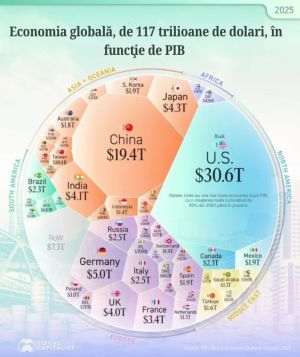The Save the Children organization raises the alarm by informing that, at the national level, over 15% of children have not even reached the end of the 8th grade and there are counties where the percentage exceeds 25%. The final results of the National Assessment, after the appeals, show that only three out of five children who entered school nine years ago managed to obtain averages above 5, and the situation at the territorial level is even more worrying. More precisely, while, at the national level, the share of students enrolled in the preparatory class nine years ago and who did not reach the end of the 8th grade is just over 15%, at the territorial level, very large discrepancies can be observed , there being counties where the level of this indicator approaches or exceeds the threshold of a quarter of the students enrolled in school: Giurgiu (27.26%); Călăraşi (25.9%), Covasna (24.51%). This percentage of leaving education can be explained, on the one hand, by school dropouts, and, on the other hand, by the phenomenon of migration. According to the Save the Children Organization: "Every year, the National Evaluation and its results bring us face to face with numerous problems encountered in ensuring the right of Romanian children to education. Following the available data regarding the generation that entered the school gates nine years ago, both by stages and geographically, we can observe a series of inequities and risks that must find their answer in public policy analyzes and measures of the relevant authorities. The current generation of eighth grade students/graduates started with 189,730 children (the number of students enrolled in the preparatory class in the 2015-2016 school year - the figure includes all types and forms of education). This year, a number of 160,467 students were enrolled in the National Assessment, that is, 15.42% of the children enrolled in the preparatory class did not reach the end of the 8th grade. The difference between the number of students enrolled in the National Assessment and those who took the tests in the National Assessment has attracted the attention of public opinion and decision-makers, and some of the factors underlying these losses at the end of secondary school call for analysis and long-term intervention short and medium". The organization also added: "1) On the one hand, the difference can be explained by the situations of consistency or repetition. This year, the registrations for the National Assessment took place between June 11-14, and the courses of the 8th grade students ended on June 14. We can see that this year there was a desynchronization between the methodological tools - the older methodological framework, but applicable this year as well, ordered the automatic enrollment in the National Assessment only for the graduates of the 8th grade, but the 2024 National Assessment calendar left room and for such cases in which the enrollments included students whose school situation was later clarified to be correct or repetitive. 2) On the other hand, the difference includes students with special educational needs who followed the special education program or benefited from curricular adaptations (regardless of whether they studied in mainstream or special schools). These students are also automatically enrolled, but they take the National Assessment only at the express request of their parents or legal representatives. And such requests are not submitted in all cases, especially when the adaptations available for these students are only related to the exam conditions, not the subjects. 3) Finally, a small part of those who did not appear for the exam are represented by Olympic students with exceptional results (who have secured places in the desired high schools, without having to take the National Assessment)". Save the Children also offers possible solutions: "Coordinating the calendar of registrations for the National Assessment with the structure of the school year for 8th grade students: - Monitoring the incidence of corrections and repetition (to avoid abusive use of these tools at the 8th grade level) ; - Introducing the possibility of adapting the subjects to the National Assessment in harmony with the curricular adaptations benefiting students with CES. Regarding school dropouts, the latest official dropout data are for the year 2021-2022, and the situation is stationary, the official dropout rate in primary and secondary school being 1.2% - year 2021-2022, 1.2% - the year 2020-2021, 1.3% - the year 2019 - 2020. These official percentages regarding school dropout raise questions, given that Eurostat shows that, in the year 2021 - 2022, 12.2% of Romanian children aged middle school were out of school, and the percentage increases to 15.86% in the 2022-2023 school year. Solutions: - Improving the procedures and mechanisms for identifying, monitoring and counteracting the risk of school dropout or failure; - Supporting the European efforts to create a system to ensure the monitoring of the respect of the rights of migrant children, in the context of the existence of such discussions at the EU level".
In part, the factors underlying the failure can be extrapolated from the results of the PISA tests: the socioeconomic status, the environment of the school attended (this year, the % of averages below 5 in the National Assessment was 15.35% in urban and 42.27% in rural), gender (in PISA, Romanian girls had similar results to boys in mathematics and better results than boys in reading, in this year's National Assessment the percentage of scores below 5 in mathematics was 31.2% for girls and 31.28% for boys, but for the Romanian language, the percentage of grades below 5 was 16.29% for girls and 28.13% for boys), the support and involvement of teaching staff and the climate of discipline, the involvement of parents in the school life of children (by keeping the connection with the school), the feeling of safety in the school environment. At the level of 2023, over 1.3 (1,360,000) million children in Romania (39% of the total number of children) grow up at risk of poverty or social exclusion. One child in six of school age does not attend school, and the difference in school performance among students from families affected by poverty compared to other children is one of the highest in the world. Furthermore, 1 in 5 children fails to complete compulsory education on time, and half of the children are functionally illiterate, due to the poor quality of education in vulnerable communities. Chronic functional illiteracy remains at the level of the first PISA assessment from 2009, i.e. almost half of the affected children: between 41.7% (reading) and 48.6% (mathematics) (PISA, 2022). The results of the analysis reveal the fact that the Romanian education system is the most inequitable of all the more than 100 participating countries (OECD, 2022).























































